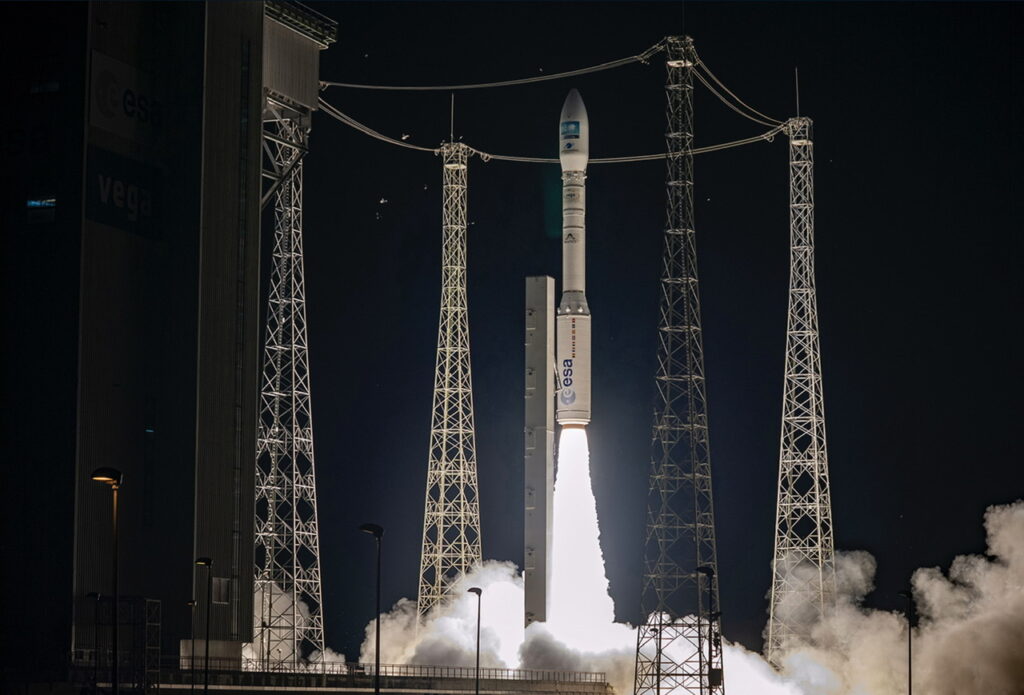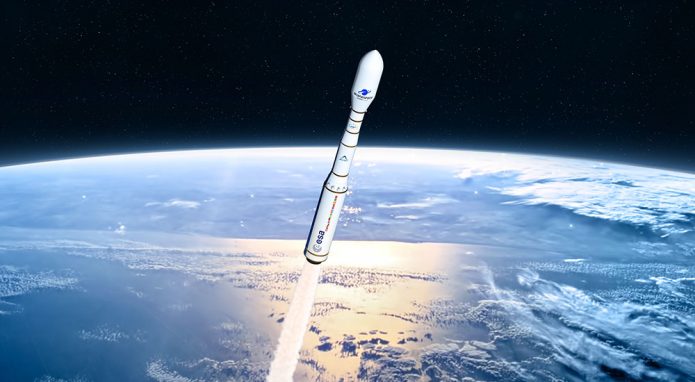*
FLEX is developed within ESA’s Future Earth Observation Programme, and will be able to measure photosynthetic activity from space.
*
ALTIUS is developed within ESA’s Earth Watch Programme, and aims to overwatch ozone and other trace gases in the upper atmosphere, thus supporting weather forecasting and monitor long-term climate evolutions.
*
Both those missions represent Arianespace additional contribution to ESA’s and Europe’s engagement regarding climate change issues and challenges.
Arianespace and the European Space Agency ESA have signed a contract to secure the launch of FLEX and ALTIUS on Vega C, from Europe’s Spaceport mid-2025.
*

*
*
FLEX (Fluorescence Explorer) is the Earth Explorer N°8 (following the most recent EarthCare & Biomass Earth Explorers programs), to quantify photosynthetic activity and plant stress by mapping vegetation fluorescence. FLEX works in tandem with the SENTINEL 3 satellites (thus the same orbital plane requirements). This satellite is manufactured by Thales Alenia Space as prime contractor, with the instrument provided by Leonardo.
*
ALTIUS (Atmospheric Limb Tracker for Investigation of the Upcoming Stratosphere) is an Earth Watch program to measure the atmospheric gases – ozone and others. This satellite is developed by the Belgium manufacturer QinetiQ Space S.A.
*
Both missions are designed to fly to a Low Earth Orbit (sun synchronous), together on the same dedicated Vega C launch, or alternatively on two different Vega C vehicles. Taking advantage of the remaining performance available on those missions, additional small satellites may embark as auxiliaries. As those two satellites are aiming to monitor climate change and help scientific progress on Earth, these institutional missions place Europe at the spearhead of environmental action.
*
About Arianespace
Arianespace uses space to make life better on Earth by providing launch services for all types of satellites into all orbits. It has orbited over 1,100 satellites since 1980, using its family of three launchers, Ariane, Soyuz and Vega, from launch sites in French Guiana (South America) and from the Russian cosmodromes in Baikonur and Vostochny. On 2022 onwards, the company will operate new generation launchers Ariane 6 and Vega C, developed by ESA. Arianespace is headquartered in Evry, near Paris, and has a technical facility at the Guiana Space Center in French Guiana, plus local offices in Washington, D.C., Tokyo and Singapore. Arianespace is a subsidiary of ArianeGroup, which holds 74% of its share capital, with the balance held by 15 other shareholders from the European launcher industry. ESA and CNES are censors at the company’s board.
*


